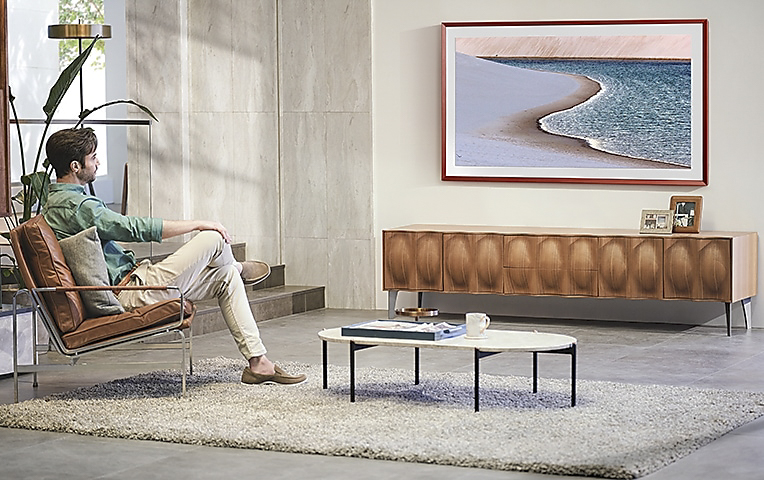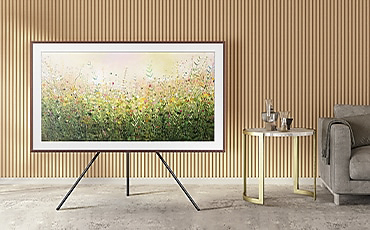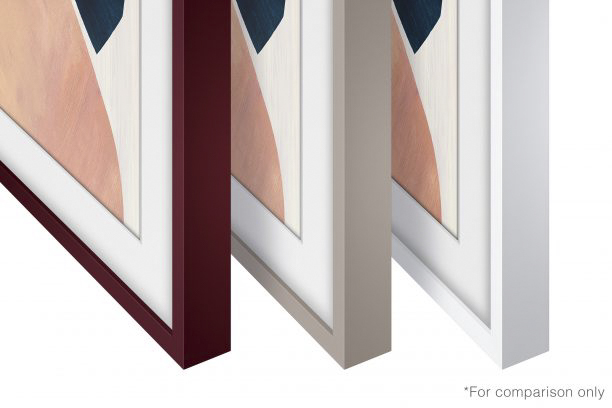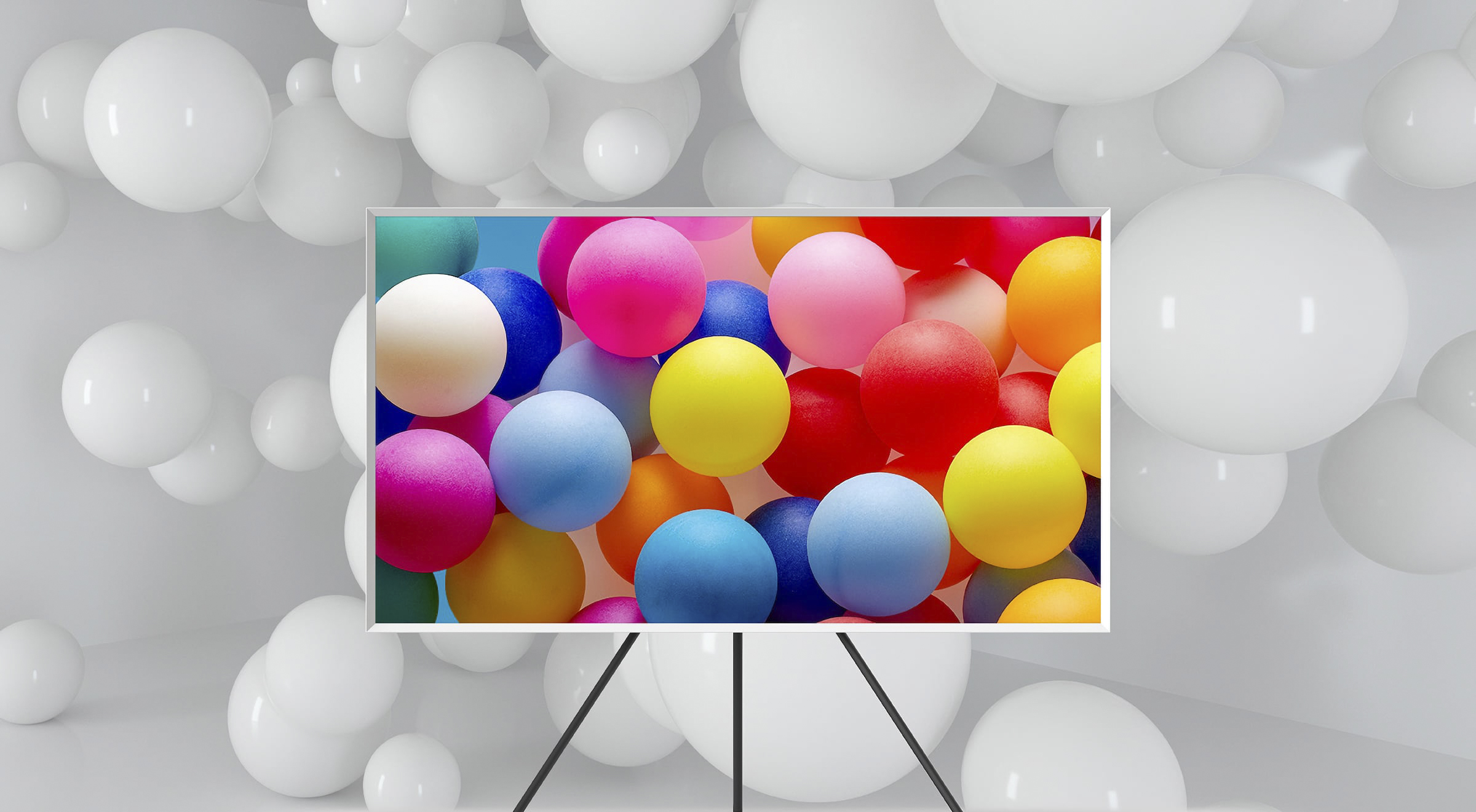Digital Camera World Verdict
Pros
- +
Stylish design
- +
Giant digital photo frame functionality
- +
Seven Frame sizes to choose from
Cons
- -
Luxury price
- -
32in version isn't 4K
Why you can trust Digital Camera World
Samsung The Frame has been a standout success for the world’s biggest TV seller. As a TV screen that prioritizes effortless design over perfect image recreation, it will appeal mostly to occasional TV watchers, those who want their big black slab of a screen to fade into the background for most of the day.
The Frame’s central conceit is that it can be disguised as a picture frame, with magnetic bezel accessories and a low-energy standby mode that displays artworks, photographs, or screensavers – much like the best digital photo frames, but one that also works as a television. Intrigued yet?
Specifications

Sizes available: 32, 43, 50, 55, 65, 75, 85 inches
Panel type: LCD (QLED)
Backlight: Dual LED
Resolution: 4K (43-85 inch), Full HD (32-inch)
Ports: HDMI 2.0 (3), HDMI 2.1 (1), USB 2.0 (2), Ethernet
Key features

Samsung The Frame is, in many ways, a frame first and a TV second. But the TV part is still crucial to address.
In most sizes of The Frame (43-inch and above), you’re getting a 4K QLED panel, of the kind found in the Q60T or Q70T, as well as Samsung’s Quantum Processor 4K. This isn’t a budget picture, then, though it’s worth noting that you won’t get the high-end performance associated with Samsung’s most expensive 4K or 8K screens.
The Frame gets the usual sweep of formats, including HDR10, HLG, and HDR10+, the last of which uses dynamic metadata to better calibrate the TV’s settings for impactful images – though you’ll need to be watching content that uses this format to get the benefit. You won’t, however, get Dolby Vision or Atmos formats – so if you’re a cinephile used to having those needs served, you have been warned.
The smallest 32-inch version is stuck at 1080p resolution, while the 32-inch and 43-inch Full HD models are capped at 60Hz – though larger sizes offer 4K/120Hz support for those that want it. HDMI 2.1 support means you can connect the latest games consoles too.
The real wonder of The Frame, though, is in how it operates outside of dedicated viewing time. It features a dedicated Art Mode for displaying artworks and photographs – whether you use some of Samsung’s free samples, buy access to collections from internationally renowned galleries in the Art Store, or upload your own photos and sketches to show off to visitors. Why put children’s drawings on the fridge, when The Frame can put them on the big screen?
Build and operation

Build is where Samsung The Frame truly shines. Without any accessories, The Frame is a panel encased in a thick, black bezel – offering a firm outline rather than the zero-bezel, all-screen designs of Samsung’s premium lineup.
This bezel is also magnetic, allowing you to attach a variety of frame designs that can differ in their style, size, and color. Want a minimalist pink frame, or a wooden effect to better ape the picture frames around it? Samsung can offer both, and given the ease of attaching them, you may well want a mix of frames to change it up every now and again. This screen is, unsurprisingly, larged intended to be wall-mounted, though it does come with a fair of hefty, stable feet if you wish to place it on a counter instead – and there’s even a tripod option with the latest model for those that want to showcase their display more boldly.
Samsung’s Tizen is also one of the best smart TV platforms in the business. It’s well laid out, easy to navigate, and features a broad sweep of key streaming apps such as Netflix, Disney Plus, Amazon Prime Video, and more. It’s very easy to mirror other devices onto Samsung’s platform, through Samsung SmartThings or Apple AirPlay, while picture-in-picture options allow you to open different apps and images simultaneously.
In terms of ports, The Frame boasts three HDMI 2.0 ports, a single HDMI 2.1 port (for 4K/120Hz passthrough), two USB 2.0 ports, and Ethernet.
The Frame also supports multiple voice assistants such as Alexa and Google Assistant, if that’s how you like to navigate your devices – and Samsung’s own Bixby assistant is included, too, if you wish to pity it.
Performance
The 2021 version of Samsung The Frame does offer a boost to picture performance, which previously has felt like the bottom priority of this set. This model uses a new lighting system called Dual LED, in which Samsung utilizes a cold backlight as well as a warm backlight, to enhance brightness across the color spectrum.
It’s not quite a Full-Array backlight, which would offer much better brightness control and coverage, but it’s still a slight improvement on the basic edge lighting used in previous models of The Frame. Color performance is certainly improved, if only average, and we assume that any more headway in this area would make The Frame’s hefty price tag unbearable – Samsung had to cut costs somewhere, after all.
Samsung excels when it comes to upscaling, too – and The Frame’s Quantum Processor 4K aptly handles even SD content (within reason), with a good hand on fast motion. Keep in mind, though, that you’re nowhere near the excellent contrast, color depth or black levels of OLED or high-end Mini-LED screens.
On the audio side you’re getting an ample 40W, which means the screen can get louder than the average 4K TV, though The Frame is a bit light on bass, with driver design that prioritizes mids and highs for clarity. These speakers can’t support Dolby Atmos, either, but Samsung is smart enough to make sure that The Frame can decode the Atmos format if you connect your display to a compatible soundbar.
Samsung The Frame: Verdict

Samsung’s The Frame is a one-of-a-kind TV. That doesn’t mean it’s for everyone, but aesthetes who want a capable, occasional TV experience married with sleek presentation shouldn’t be disappointed.
The 2021 model is unsurprisingly the most advanced so far, with a tweaked backlighting system that helps elevate the Frame beyond previous versions – though it might be the brilliant software native to all Samsung TVs that make it such a delight to interface with.
Tizen is an exceptional platform, while the Art Mode and Ambient Mode baked into this screen make it a multi-use wonder, even if you’ll need to pay a subscription cost to access wider arrays of artwork from around the world.
The best part, though, is that you can turn the TV off, and enjoy the screen in a whole different way.
Read more
Henry is a freelance technology journalist. Before going freelance, he spent more than three years on TechRadar reporting on TVs, projectors and smart speakers as the website's Home Cinema Editor – and has been interviewed live on both BBC World News and Channel News Asia, discussing the future of transport and 4K resolution televisions respectively. As a graduate of English Literature and theater enthusiast, he'll usually be found forcing Shakespeare puns into his technology articles, which he thinks is what the Bard would have wanted.


